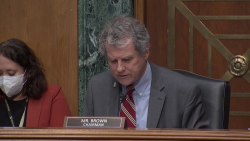November 2022 is a month that investors, particularly in cryptocurrencies, will never forget. And the worst may be yet to come.
Over the past two weeks, the digital asset industry has watched in horror as FTX, the multi-billion-dollar crypto exchange created by one of its biggest and brightest stars, Sam Bankman-Fried, imploded.
The failure of FTX, shook the foundations of the entire ecosystem. Token prices tumbled across the board as investors rushed to exit risky positions. Contagion followed. In the panic, depositors scrambled to pull their money out of various crypto platforms, forcing lenders to halt withdrawals — what one industry watcher described a going on “death watch.”
Overnight, Bankman-Fried went from hero to villain.
How did we get here? And can crypto survive? The saga is far from over, but if you’re just tuning in, here’s what you need to know.
Quick recap
On November 2, an article from the crypto trade publication Coindesk cited a leaked financial document that raised questions about the relationship between FTX and Bankman-Fried’s trading house, Alameda. On paper, they were two separate companies that happened to be owned by the same man. But the Coindesk article said that Alameda “rests on a foundation largely made up of a coin that a sister company invented.”
A few days later, the head of FTX’s biggest rival, Binance, said the company would liquidate $580 million worth of FTT, the FTX’s in-house token. That set off a firestorm of draw downs that FTX didn’t have the cash to facilitate.

Panic spread, tanking the value of not only FTT but also more mainstream cryptos including bitcoin, ethereum and solana.
FTX faced a massive liquidity crisis. It needed a bailout, and briefly, it seemed it might be rescued by none other than Binance, its rival whose drawdown escalated the crisis. But Binance bailed on the rescue plan less than a day after announcing it, saying FTX’s problems were “beyond our control or ability to help.”
On November 11, FTX and Alameda filed for bankruptcy, and Bankman-Fried resigned as CEO of the exchange. “I f**ked up,” he wrote in a lengthy Twitter apology.
House of cards
FTX appointed a restructuring expert, John J. Ray III, as CEO to shepherd what’s left of the firm through bankruptcy.
That involves taking a cold hard look at the company’s financials and figuring out exactly how much it holds in assets and liabilities.
It’s only been a week, and Ray has declared it’s the biggest mess he’s ever encountered. That’s coming from an executive who made his name overseeing the liquidation of Enron, the largest bankruptcy reorganization in US history.
“Never in my career have I seen such a complete failure of corporate controls and such a complete absence of trustworthy financial information as occurred here,” Ray wrote in a court filing Thursday.
The filing contains evidence of colossal mismanagement and potential fraud taking place under Bankman-Fried’s leadership.
Bankman-Fried hasn’t been charged with any crimes. His lawyer didn’t respond to CNN Business’ request for comment.
Crypto contagion
The crypto industry is on edge, waiting for the next dominoes to fall. Soon after FTX went down, crypto firms were inundated requests from customers seeking to claw their money back — the crypto equivalent of a run on the bank. Several firms have been forced to suspend withdrawals while they sort out their liquidity problems.
“In the crypto world, the minute you see a company or firm announce ‘we’re temporarily halting withdrawals’ — yikes,” said Daniel Roberts, editor-in-chief of Decrypt Media, a crypto-focused news outlet. “You put them on death watch now … It’s unusual that someone says ‘we’re halting withdrawals’ and then they say, ‘OK, withdrawals back on, we’re good.’”
Among the firms that are at risk is lender BlockFi, which said it has “significant exposure” to FTX. BlockFi has suspended most operations. According to the Wall Street Journal, the company is preparing for a potential bankruptcy filing.
The pain isn’t confined to crypto companies. Venture capital firm Sequoia marked down its $210 million investment in FTX to zero. Similarly, the Ontario Teachers’ Pension Plan, which invested $95 million, said it now believes that investment is worthless. Roughly 1 million others may have lost all the money they put into FTX.
Binance, meanwhile, is stepping in as a potential lifeline for companies hit by FTX’s collapse. Its CEO, Changpeng Zhao, said Monday that his team would establish “an industry recovery fund,” for projects facing a liquidity crisis. Binance and others have been quick to try to distinguish themselves from FTX, assuring customers and investors that their financials are on solid footing.
Zhao, who goes by CZ, told CNN’s Anna Stewart that an FTX-style collapse is not a risk for Binance. Asked what he would say if all his customers wanted to withdraw their money at once, CZ replied: “Yes, no problem…We have always been profitable.”
Quirky genius turns pariah
At the heart of the entire saga is an enigmatic 30-year-old who managed to charm his way into powerful circles dominated by celebrities, lawmakers and deep-pocketed investors.
In recent years, SBF (as he’s known online) appeared on the covers of Forbes and Fortune, hailed as the crypto world’s Warren Buffett. He accumulated a vast personal fortune, estimated at $26 billion at its peak earlier this year.
All of that went up in smoke as FTX unraveled. His fortune was completely wiped out, and now his companies are under investigation by federal prosecutors in New York, according to a person familiar with the matter.
SBF had become a fixture in Washington, too, where he regularly traveled to lobby lawmakers for greater regulatory clarity for the crypto industry. But since losing his companies, SBF has been tweeting erratically and told a Vox reporter that all of his DC trips were little more than white-hat posturing.
“F*ck regulators,” he told Vox in the interview, which was conducted over direct messages on Twitter. “They make everything worse.”
Investigations and regulatory scrutiny
FTX said this week that its representatives have been in touch with “dozens” of federal, state and international regulatory agencies.
In addition to the Southern District of New York’s probe, FTX is reportedly under investigation by the Securities and Exchange Commission and the Commodities and Futures Trading Commission, according to multiple news outlets.
Authorities in the Bahamas, where FTX is based, opened a criminal investigation shortly after the firm filed for bankruptcy.
On Friday, a powerful subcommittee in the House of Representatives said it was seeking internal documents and communications from Bankman-Fried and FTX to understand how the crypto exchange collapsed so suddenly and what is being done to recover customer funds.
Can crypto survive?
In short yes. But there will be a lot more pain.
“In the short term, FTX’s collapse has destroyed trust,” said Matt Hougan, CIO at crypto asset manager Bitwise. “The marginal crypto investor will now think twice before signing up for an account, and many institutional investors will sit on the sidelines waiting to see what other shoes will drop.”
Many observers have compared crypto to the dot-com bubble of the late 90s — plenty of companies went bust, but those that survived, like Amazon, emerged to become the cornerstones of the tech industry.
Another historical comparison making the rounds is the fall of Lehman Brothers in 2008, which set off a global financial crisis. Crypto optimists might be quick to point out that Lehman didn’t take all of Wall Street down with it. Skeptics might counter that that’s only because the US government intervened — an outcome that is highly unlikely in the largely unregulated world of crypto.
“There are attempts to make this about cryptocurrency and sufficient regulation, but this disaster has nothing to do with crypto in and of itself,” said economist Pete Earle of the American Institute for Economic Research, a think tank. “It’s about fraud and the power of virtue signaling.”
He added: “This scandal, far from destroying crypto, practically ensures that crypto will be around for a long, long time.”



























